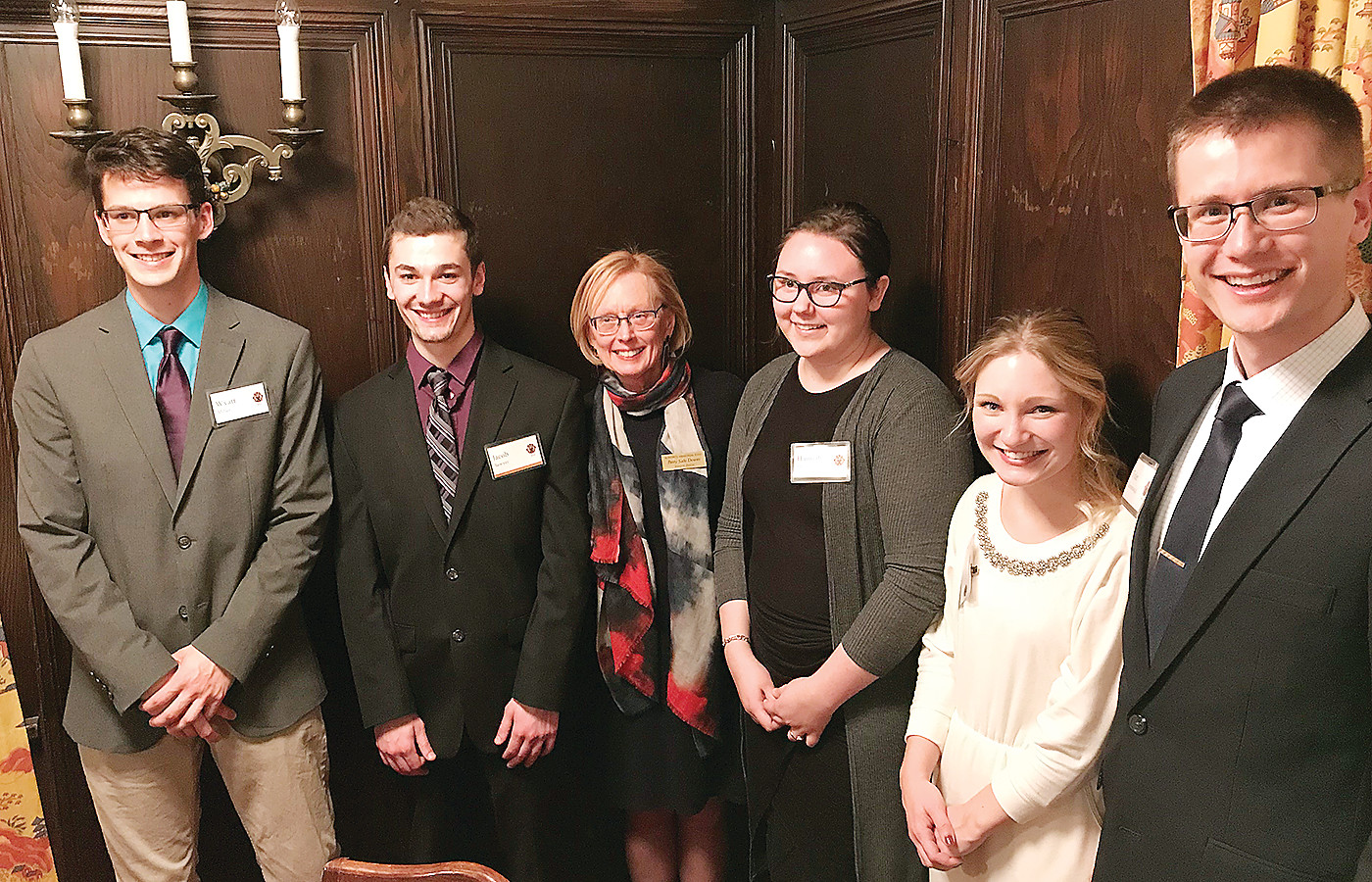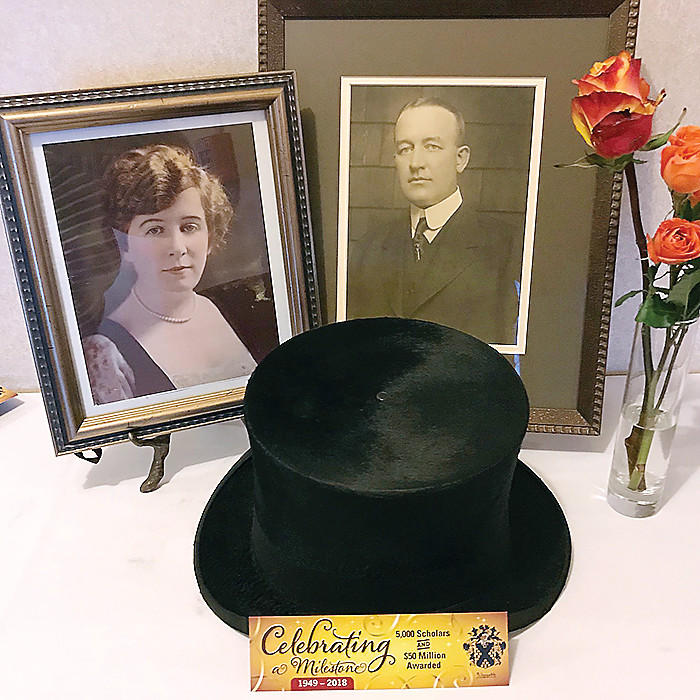Support the Timberjay by making a donation.
Remarkable milestones
5,000 scholarships and $50 million in giving for Alworth Memorial Fund
REGIONAL— For nearly 70 years, the board of the Marshall H. and Nellie Alworth Memorial Fund have given Northland students a major helping hand as they pursue academic and personal success. Earlier …
This item is available in full to subscribers.
Attention subscribers
To continue reading, you will need to either log in to your subscriber account, or purchase a new subscription.
If you are a current print subscriber, you can set up a free website account and connect your subscription to it by clicking here.
If you are a digital subscriber with an active, online-only subscription then you already have an account here. Just reset your password if you've not yet logged in to your account on this new site.
Otherwise, click here to view your options for subscribing.
Please log in to continue |
Remarkable milestones
5,000 scholarships and $50 million in giving for Alworth Memorial Fund
REGIONAL— For nearly 70 years, the board of the Marshall H. and Nellie Alworth Memorial Fund have given Northland students a major helping hand as they pursue academic and personal success. Earlier this month, the fund surpassed two major milestones when the board approved their 5,000th scholarship and surpassed the $50 million mark since the founding of the fund back in 1949.
While scholarship programs are hardly uncommon, the Alworth scholarship is one that truly makes a difference for students. It’s a significant award, currently running $5,000 each year for a full four years of a student’s studies. It’s open to all northeastern Minnesota students pursuing degrees in science or math, based on academic achievement and demonstrated financial need.
“It helps a ton,” said Jonathon Lanari, a UMD freshman and Alworth recipient from the Lake Vermilion area. While most students learn about the Alworth scholarship from a school counselor or teacher, Lanari learned of it from his older brother Mark, who was a scholarship recipient several years earlier. Jonathon is currently pursuing a degree in chemical engineering and is having real success, having just been approved for upper division courses. “It’s really helpful that I don’t have to work and can focus entirely on my studies,” said Lanari. “And I have time to get involved in things, like some of the student clubs.”
Back in 1949, when Marshall W. Alworth and his wife Margaret created the fund, college tuition and student debt weren’t the hot topics that they are today. In those days, scholarships ranged from $300-$800, which was often enough to cover all of a student’s expenses.
These days, the scholarships no longer cover all of a student’s expenses, but they make a significant difference, allowing students to focus more on their studies and spend less time worrying about next semester’s tuition. And with many students able to earn college credit while still in high school these days, the four years of Alworth funding can give students a leg up on more than just their undergraduate studies, since the funding can be applied to graduate school studies as well.
While there actually are a few rocket scientists among the list of former Alworth students, Alworth board chair Eric Norberg, of Tower, said the scholarships aren’t just for the class “brainiac.”
“We’re looking for a hard-working, gritty kid who has an interest in math and science and has a financial need, and where we can help provide the nudge that can make the difference.”
Patty Salo Downs, the fund’s executive director, said the scholarship can provide the kind of incentive to encourage students to seriously consider a degree in math or science. “We’ve heard from students who do pursue math or science because of the scholarship, and it does give them that extra boost of confidence,” said Salo Downs.
It doesn’t always work out as planned, of course. Kate Beaudry, who graduated last year from the North Woods School, won an Alworth scholarship and is currently studying at the University of Minnesota in Minneapolis. She said she’s having a great experience in college, and that the scholarship’s focus on math and science proved helpful in convincing her that the field wasn’t for her after all. She said she’s discovered her aptitudes are more in the area of communications, and that she’ll be shifting her studies next semester after a heavy load of calculus and physics this year. That means she’ll be giving up her scholarship as she shifts to her new area of study.
A rigorous process
Each year between Nov. 1 and Jan. 15, the fund accepts scholarship applications from high school seniors across a wide swath of northern Minnesota, including all of the Arrowhead.
The application includes essay questions, a personal statement, family financial information, and a letter of recommendation from a math or science teacher.
Salo Downs and her staff sort through the roughly 200-240 applications they receive each year, to ensure that they meet the various criteria, including a high school GPA of 3.5 or above and a minimum ACT score of 25. The students must also confirm their intent to pursue a math or science-related career. The list of qualifying areas is fairly broad, including everything from medicine to forestry, wildlife management to meteorology.
The applications that meet the criteria are added to “the book,” which goes out to the eight board members after the application period closes.
Each board member selects their own top 100 or so, a list that is ultimately whittled down to about 60-70 new recipients on top of the students already being funded from previous years. It’s a subjective process, one that considers much more than GPA. “We want to see what kind of academic rigor they had in high school. We look at the activities they were involved in, as well as leadership and things like volunteer service. It’s pretty rigorous, but the payoff is potentially huge, notes Salo Downs. “They might have to put four good hours into the application, but when you consider you can get $20,000, that’s a pretty good return on investment. I often tell students it’s the most money they’ll ever make per hour in their entire life. It can make the difference between graduating with debt or not.”
Giving back
Marshall H. Alworth made his fortune in the lumber and mining industries in northern Minnesota and he was a prominent longtime resident of Duluth and a benefactor to the community. Born in New York in 1846, Alworth left home to pursue employment at age of thirteen, working in various fields, but eventually became skilled as a land and timber explorer, a job that eventually brought him to Minnesota. While he left the state for a time in the wake of the 1873 financial panic, Alworth returned to the area in 1882 and began purchasing government timber land, both for others and for himself.
Some of those sales included the mineral rights and that eventually proved lucrative for Alworth when iron ore was found across the Mesabi Range, where he held significant ownership and profited from the development of the minerals there.
Throughout his life, Alworth distinguished himself as a generous benefactor of community projects in Duluth, and it was a tradition carried on by his son Marshall W. Alworth, who was born in Duluth in 1883 and lived in the city until 1966. The younger Alworth focused much of his giving on educational pursuits, funding major facilities at the University of Minnesota-Duluth, including the science lecture hall and faculty office building and the planetarium, both of which bear his name.
Salo Downs said the focus on math and science was consistent with Mr. Alworth’s interests. “Mr. Alworth loved medicine, he loved research, and loved math and science,” she said. “He felt that’s where the most benefit to humanity could be obtained.”
Working for the Alworth fund has given Salo Downs reason to believe in the continued value of that founding vision. Despite the usual complaints about the younger generation, Salo Downs says she’s optimistic. “We have some pretty amazing kids out there. It’s really, really exciting to see the initiative they’ve taken throughout high school,” she said. “It gives me hope for the future.”









